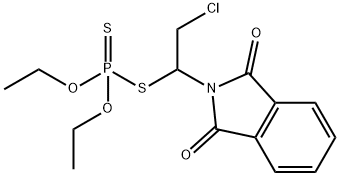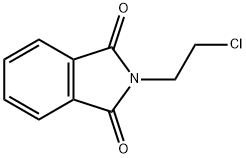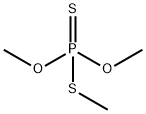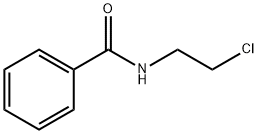DIALIFOS
- CAS NO.:10311-84-9
- Empirical Formula: C14H17ClNO4PS2
- Molecular Weight: 393.85
- MDL number: MFCD00055503
- EINECS: 233-689-3
- SAFETY DATA SHEET (SDS)
- Update Date: 2024-12-18 14:08:52

What is DIALIFOS?
Description
Dialifor is a crystalline solid. The commercialproduct may also be available as a colorless oil. Molecularweight = 393.86; Freezing/Melting point (solid) = 68℃.Hazard Identification (based on NFPA-704 M RatingSystem): Health 3, Flammability 0, Reactivity 0. Insolublein water.Dialifor is a crystalline solid. The commercialproduct may also be available as a colorless oil. Molecularweight = 393.86; Freezing/Melting point (solid) = 68℃.Hazard Identification (based on NFPA-704 M RatingSystem): Health 3, Flammability 0, Reactivity 0. Insolublein water.
Chemical properties
Dialifor is a crystalline solid. The commercial product may also be available as a colorless oil.
The Uses of DIALIFOS
Insecticide; acaricide.
The Uses of DIALIFOS
Nonsystemic insecticide and acaricide to control chewing and sucking insects and spider mites on a wide variety of fruits and vegetables.
Definition
ChEBI: Dialifor is a member of isoindoles.
General Description
White crystalline solid, also reported as a colorless oil, colorless. Used as an insecticide and acaricide (kills beetles, ticks, mites, etc.).
Reactivity Profile
Releases nitrogen oxides, sulfur oxides, and phosphorus oxides when heated. Readily hydrolyzed by concentrated alkali. Avoid alkali. [EPA, 1998]. Organophosphates, such as DIALIFOS, are susceptible to formation of highly toxic and flammable phosphine gas in the presence of strong reducing agents such as hydrides. Partial oxidation by oxidizing agents may result in the release of toxic phosphorus oxides.
Health Hazard
DIALIFOS can cause serious symptoms and in extreme cases death by respiratory arrest.
Health Hazard
Highly toxic by all routes of exposure;exhibits acute, delayed, and chronic effect;cholinesterase inhibitor; symptoms of poi-soning are similar to those of parathion,including weakness and twitching of mus-cle, headache, giddiness, dizziness, excessivesalivation, lacrimation, tightness in chest,blurred vision, slurred speech, mental confu-sion, and drowsiness; gastrointestinal effectsinclude nausea, vomiting, stomach cramps,and diarrhea; heavy exposure can lead to dif-ficulty in breathing, convulsions, and coma;median lethal doses reported in the literatureshow inconsistent and varying values.
LD50 oral (rat): 5–53 mg/kg
LD50 oral (mouse): 39–65 mg/kg
LD50 oral (rabbit): 35 mg/kg
LD50 skin (rabbit): 145 mg/kg.
Fire Hazard
Releases nitrogen oxides, sulfur oxides, and phosphorus oxides when heated. Readily hydrolyzed by concentrated alkali. Avoid alkali.
Safety Profile
Poison by ingestion and skin contact. An experimental teratogen. Other experimental reproductive effects. When heated to decomposition it emits toxic fumes of SOx, POx, and NOx.
Potential Exposure
A potential danger to those involved in the manufacture, formulation and application of this insecticide.
First aid
If this chemical gets into the eyes, remove anycontact lenses at once and irrigate immediately for at least15 min, occasionally lifting upper and lower lids. Seek medical attention immediately. If this chemical contacts the skin,remove contaminated clothing and wash immediately withsoap and water. Speed in removing material from skin is ofextreme importance. Shampoo hair promptly if contaminated.Seek medical attention immediately. If this chemical hasbeen inhaled, remove from exposure, begin rescue breathing(using universal precautions, including resuscitation mask) ifbreathing has stopped and CPR if heart action has stopped.Transfer promptly to a medical facility. When this chemicalhas been swallowed, get medical attention. Give large quantities of water and induce vomiting. Do not make an unconscious person vomit. Effects may be delayed; medicalobservation is recommended.
Environmental Fate
Chemical/Physical. Though no products were identified, the hydrolysis half-lives at 20°C were 15 days and 14 hours at pH 6.1 and pH 7.4, respectively (Freed et al., 1979, 1979a).
Storage
Color Code—Blue: Health Hazard/Poison: Storein a secure poison location. Prior to working with dialiforyou should be trained on its proper handling and storage.Store in tightly closed containers in a cool, well-ventilatedarea away from strong bases.
Shipping
UN2811 Toxic solids, organic, n.o.s., Hazard Class: 6.1; Labels: 6.1-Poisonous materials, Technical Name Required.
Incompatibilities
Strong bases. Contact with oxidizers may cause the release of phosphorous oxides. Contact with strong reducing agents, such as hydrides, may cause the formation of flammable and toxic phosphine gas.
Waste Disposal
Alkaline hydrolysis or incineration. In accordance with 40CFR165, follow recom- mendations for the disposal of pesticides and pesticide containers. Must be disposed properly by following pack- age label directions or by contacting your local or federal environmental control agency, or by contacting your regional EPA office.
Properties of DIALIFOS
| Melting point: | 68℃ |
| Boiling point: | 465.9±55.0 °C(Predicted) |
| Density | 1.435±0.06 g/cm3(Predicted) |
| Flash point: | 100 °C |
| storage temp. | 0-6°C |
| solubility | Chloroform (Slightly), Ethyl Acetate (Slightly) |
| pka | -2.72±0.20(Predicted) |
| form | solid |
| Water Solubility | 0.18mg/L(temperature not stated) |
| Merck | 13,2989 |
| EPA Substance Registry System | Dialifor (10311-84-9) |
Safety information for DIALIFOS
| Signal word | Danger |
| Pictogram(s) |
 Skull and Crossbones Acute Toxicity GHS06  Environment GHS09 |
| GHS Hazard Statements |
H300:Acute toxicity,oral H311:Acute toxicity,dermal H410:Hazardous to the aquatic environment, long-term hazard |
| Precautionary Statement Codes |
P264:Wash hands thoroughly after handling. P264:Wash skin thouroughly after handling. P273:Avoid release to the environment. P280:Wear protective gloves/protective clothing/eye protection/face protection. P312:Call a POISON CENTER or doctor/physician if you feel unwell. P301+P310:IF SWALLOWED: Immediately call a POISON CENTER or doctor/physician. P501:Dispose of contents/container to..… |
Computed Descriptors for DIALIFOS
New Products
4,4-Difluoropiperidine hydrochloride tert-butyl 9-methoxy-3-azaspiro[5.5]undecane-3-carboxylate Indole Methyl Resin N-Isopropylurea N,N-Dicyclohexylcarbodiimide(DCC) MELDRUMS ACID 5-METHYLISOXAZOLE-4-CARBOXYLIC ACID Magnessium Bis glycinate Zinc ascorbate 1-bromo-2-butyne 2-acetamidophenol 9(10H)-anthracenone Erythrosin B, 4-Piperidinopiperidine 2-((4-morpholinophenylamino) (methylthio) methylene) malononitrile 2,4-dihydroxybenzaldehyde 3-(4-morpholinophenylamino)-5-amino-1H-pyrazole-4-carbonitrile Methyl 2-methylquinoline-6-carboxylate 2,6-dichloro-4-nitropyridine 4-Bromo-2-chlorobenzonitrile 2-(benzylamino)acetic acid hydrochloride 4-(tert-Butoxycarbonylamino)but- 2-ynoic acid 3,4-dihydro-2H-benzo[b][1,4]dioxepine 1-Phenyl-1-cycloprppanecarboxylicacidRelated products of tetrahydrofuran








You may like
-
 3-(4-amino-1-oxoisoindolin-2-yl)-1-methylpiperidine-2,6-dione 98%View Details
3-(4-amino-1-oxoisoindolin-2-yl)-1-methylpiperidine-2,6-dione 98%View Details -
 1-methylindoline-2,3-dione 98%View Details
1-methylindoline-2,3-dione 98%View Details
2058-74-4 -
 614-19-7 98%View Details
614-19-7 98%View Details
614-19-7 -
 3112-85-4 Methyl phenyl sulfone 98%View Details
3112-85-4 Methyl phenyl sulfone 98%View Details
3112-85-4 -
 20677-73-0 (2,2-diethoxyethyl)methylamine 98%View Details
20677-73-0 (2,2-diethoxyethyl)methylamine 98%View Details
20677-73-0 -
 3-(4-(hydroxyamino)-1-oxoisoindolin-2-yl)piperidine-2,6-dione 98%View Details
3-(4-(hydroxyamino)-1-oxoisoindolin-2-yl)piperidine-2,6-dione 98%View Details -
 57381-49-4 2-bromo-4-chlorobenzonitrile 98%View Details
57381-49-4 2-bromo-4-chlorobenzonitrile 98%View Details
57381-49-4 -
 4,6-dichloropyrimidine-5-carbaldehyde 98%View Details
4,6-dichloropyrimidine-5-carbaldehyde 98%View Details
5305-40-8
